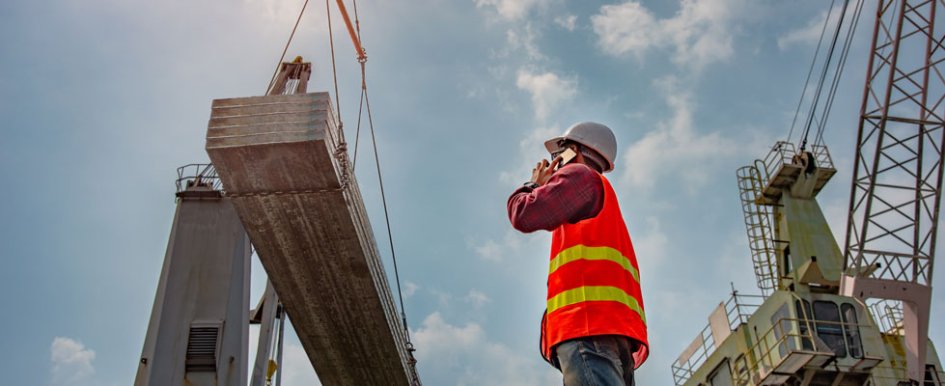
Of the 5,333 workplace fatalities that occurred in 2019, nearly 20% of victims were in the construction industry. Serious injuries and fatalities (SIFs) in the construction industry have remained consistently high in recent years, and safety continues to be a top priority for employers in 2021.
Twenty percent of the victims of fatal incidents were contracted workers, which raises additional concerns since contract construction workers are essential to the industry. In many cases contracted workers don’t receive sufficient health insurance, making their injuries an even greater risk. And it’s often more challenging to manage the risk exposures contractors face than their salaried counterparts. Both full-time and contracted workers deserve on-the-job safety measures that include safety training, protective equipment and adequate awareness of the hazards in the workplace.
To keep employees safe, construction companies should invest in modern, secure and data-driven solutions that reduce the number of fatalities on the job. Harness the power of these digital tools and careful training, you can create a safer environment for all your workers.
The Rising Rate of SIFs
Construction workers face danger every day — they routinely work at elevated heights, and handle equipment and machinery, electrical wiring and other hazards. The Bureau of Labor Statistics’ annual report on fatal workplace injuries revealed there were 1,061 construction deaths in 2019 — a 5% increase in fatalities in private construction and the largest total since 2007. Falls remain the No. 1
cause of construction fatalities, constituting one-third of all deaths in the industry. Aside from falls, struck-by hazards (struck-by falling, flying, swinging objects or objects on ground level) are the second most common cause of construction fatalities. Workers caught in or between objects is the third most common fatal incident in construction, followed by electrocution. In fact, the construction industry accounted for 43% of fatal electrocutions in 2019 — the highest of any industry.
Fatal incidents often lead to legal implications, financial losses and reputational damage. If your company does not meet certain safety standards, it risks serious legal consequences. Lawsuits and negative press can damage your organization’s reputation — and incidents can also incur financial costs in the form of medical bills, wage and productivity losses and administrative expenses. Construction fatalities can cost companies up to millions of dollars per death, and nonfatal injuries can cost thousands of dollars.
The construction industry also has the highest number of preventable deaths of any industry. Construction work costs hundreds of lives every year — this alone is reason enough to rethink how your company will address the increased complexity and gravity of risk management across diverse work environments.
Closing the Safety Gap With Data
Risk and safety data is typically gathered from observational audits and incident management systems to evaluate past safety event and performance data. But most construction work is now done by contract workers rather than full-time employees. Behind agriculture, the construction industry has the second highest percentage of temporary workers — nearly 40% of construction workers are hired through temporary agencies, contracted by other companies or are independent contractors (versus full-time employees). With a higher percentage of contracted employees, tracking incidents across multiple employers is a challenge.
As a result, construction companies are turning to purpose-built contractor management platforms and analytics to evaluate and improve safety. Comparing internal and external data helps predict trends and identify patterns. And the digitalization of businesses and information makes accessing external data much easier.
With more accessible data available, risk management experts can use descriptive analytics and implement predictive models to mitigate the risk of future SIFs. Using data can help organizations understand the underlying causes of these incidents, unveiling ways to better their procedures. The benefits of data analytics are twofold: It helps improve safety for all employees and allows contracted workers to evaluate safety data before deciding whether they want to work for a certain organization.
Ensure your data comes from a secure, reliable source. Also keep in mind that the use of third-party data requires strong security measures and quality data. For stronger security, automate your organization’s security functions, require multifactor authentication and keep employees trained on cybersecurity measures. Organizations should identify timely data sources and contractor management platforms to ensure efficiency, visibility into employee and contractor performance and safe business operations.
Prioritizing the safety of your employees through data analytics could improve profitability and increase your ability to attract and retain qualified workers. Additionally, these platforms can help your organization reallocate resources that would normally be used for liability and legal matters related to SIFs — and most importantly, ensure the safety and well-being of all your employees.
